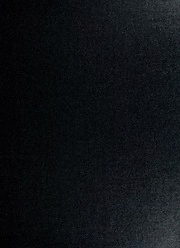
Radiated noise from a three dimensional truss PDF
Preview Radiated noise from a three dimensional truss
DUDLEY KNOXLIBRARY ^uMt POSTGRADUATESCHOOL NAVAi M*AtT€REY CA 93943-5101 Radiated Noise From a Three Dimensional Truss by Leo E. Chiasson Jr. // B.S. Aerospace Engineering Boston University (1981) Submitted in partial fulfillment ofthe requirements for the degrees of MASTER OF SCIENCE IN OCEANOGRAPHIC ENGINEERING at the MASSACHUSETTS INSTITUTE OF TECHNOLOGY and the WOODS HOLE OCEANOGRAPHIC INSTITUTION and MASTER OF SCIENCE IN MECHANICAL ENGINEERING at the MASSACHUSETTS INSTITUTE OF TECHNOLOGY September 1995. © Massachusetts Institute ofTechnology 1995. All Rights Reserved. ProfessorArthur B. Baggeroer, Chair, Joint Committee for Applied Ocean Science and Engineering, MIT-WHOI WMfW / 7 t. NAVAL POSTGRADUATE SCHOOL MONTEREY CA 93943-5101 RADIATED NOISE FROM A THREE DIMENSIONAL TRUSS by Leo E. Chiasson Jr. Submitted to the Department ofOcean Engineering on August 4, 1995 in partial fulfillment ofthe requirements for the degrees of Master ofScience in Oceanographic Engineering and Master ofScience in Mechanical Engineering Abstract: The Massachusetts Institute of Technology Truss Damping Group continues to study the dynamic and vibrational characteristics ofa three dimensional aluminum truss which is based on a repeating square pyramidal pattern. The truss is a notional model ofthe type ofstructure which will be considered for use in the future design of submersibles and Autonomous Underwater Vehicles (AUVs) to mount machinery. A current concern is in the ability to accuratelypredict the level ofradiated noise which the truss will transmit to the environment inside the submersible due to an arbitrary vibrationalloading.The noise producedcouldhave unsatisfactorycouplingeffectswith the fluid surrounding the submersible and could also produce unacceptable levels of noise inside. The vibrational energy in the truss members as a result of arbitrary loading is predicted using a previously developed numerical analysis technique known as the Direct Global Stiffness Matrix (DGSM) method. These vibrational levels are then used to calculate the radiated sound power, with the struts modeled as finite length vibrating wires. The sound power with the addition offlat plates to the truss is also modeled. A truss, which was previously constructed at MIT, is vibrated at one end and the sound power radiated, normalized to input power, is measured using an intensity probe. The measured sound power for the bare truss is within 3 dB of the DGSM prediction for a structural loss factor, r]s, of .003. The structural loss factor, rjs, is the most crucial entering argument to the DGSM prediction. A method ofmeasuring the DGSM total loss factor, ryror to improve the input ofstructural loss factorreduces the differencebetweenpredictionandmeasurementtoapproximately 1 dB. The prediction ofthesoundpowerwithplatesattachedtothetrussexceedsthemeasurementby20dB. Further experimentation and analysis proves that the method ofmounting the plates to the truss resulted in poor coupling ofthe plates to the struts; the DGSM method assumes strong coupling therebyleadingto the erroneouslyhigh estimate. The measured sound power for the bare truss peaks at 6 kHz, where 16 % ofthe mm input power is transmitted as sound. When ^ metersquare aluminum plates of2 thickness are placed on the truss, the amount of input power which is radiated as sound increases to 28 % at the same 6 kHz peak. Thesis Supervisor: Dr. J. Robert Fricke Title: Assistant Professor Acknowledgments AsinanyendeavorinthefieldofEngineering, nooneworks alone. Thisthesiscould nothave been completedwithoutthehelp and guidance ofmythesis advisorAssistant ProfessorJ. RobertFricke andmythesisreaderAssistantProfessorFrankFeng. I also owe thanks to Professor Ira Dyer for his probing and often painful questions, which always got me back on the right path. In addition, I am grateful for the continuous help I received from all the members ofthe Acoustics and Vibration Laboratory, most notably Dr. Joe Bondaryk, and Mark Hayner. This thesis would also not have been possible without the pioneeringwork ofMarcus Heath, who single-handedly designed and constructed the object ofthis study. The greatest thanks go to my family. The support I received from my wife Mary and my sons Jeffrey and Gregory enabled me to concentrate on the completion ofmy graduate program, and made the whole process bearable. Lastly, I would like to thankthe United States Navy for giving me the opportunity and financial support to pursue this degree, and the Advanced Research Projects Agency (ARPA) and the Office of Naval Research (ONR) for providing the funding associatedwith this project. In particular, I am thankful for the support receivedfrom theNavyAcademicOffice, mostnotablytheiradministrativeassistantJenniferLaible, whowas probablythe mosthelpful and friendlyperson I met during my entire time at MIT. Her competence and cheerful attitude made her a pleasure to work with.
